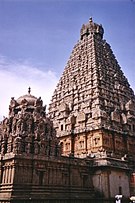Malayamān
This article needs additional citations for verification. (October 2013) |
| Part of a series on |
| History of Tamil Nadu |
|---|
 |
The Malayamān were chieftains who ruled Miladu Naadu, the area around Tirukkoyilur of Tamilakam, during the Sangam period.Chiefs of this dynasty readily took the title Chēdirāyan, and ruled the hill countries. This clan's most famous king was Malaiyamān Thirumudi Kaary. Their royal emblem featured a horse, depicted on their issued coins. Malaiyamans descended from the pastoral shepherd tribe in the Mullai (forest) region[1][2] .
It is of interest to note that Vanavan Mahadevi, the mother of Rajaraja Chola I, was a princess of Malayaman family.[3]
Malayaman coins
The Malayamans issued copper coins of quadrilateral shape which bore their royal emblem, a horse (sometimes facing left, and sometimes right). In some of the early coins, the legend "Malayaman" above the horse motif decorates the coin obverse. Most of their coins carried the symbolic map of their territory on the reverse: "A wide curved river with fishes flowing in it, and a hillock on side of the river". This depicted the territory over which they ruled. The Malayaman coins generally weighed from 2–4 g and were thin, unlike the contemporary Chera coins.
See also
References
- ^ Natana Kacinatan (1994). "Collected papers: studies in Tamil culture". History. Department of Archaeology. p. 81.
- ^ B. B. Chaudhuri, Arun Bandopadhyay, Indian History Congress. Session (2004). "Tribes, forest, and social formation in Indian history". History. Manohar. p. 68.
{{cite web}}: CS1 maint: multiple names: authors list (link) - ^ Raj Pruthi, Rameshwari Devi, Romila Pruthi. Encyclopaedia of Status and Empowerment of Women in India: Status and position of women in ancient, medieval and modern India. Mangal Deep Publications, 1999 - Feminism. p. 175.
{{cite book}}: CS1 maint: multiple names: authors list (link)
Further reading
- "south_indian_inscriptions/volume_22". Archaeological Survey of India. Retrieved 9 November 2008.
